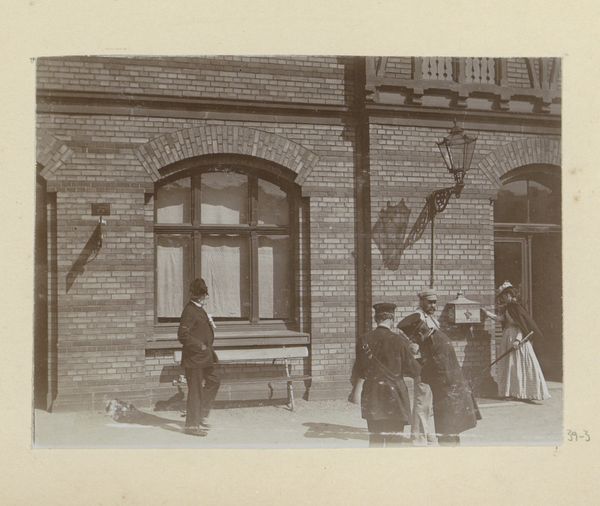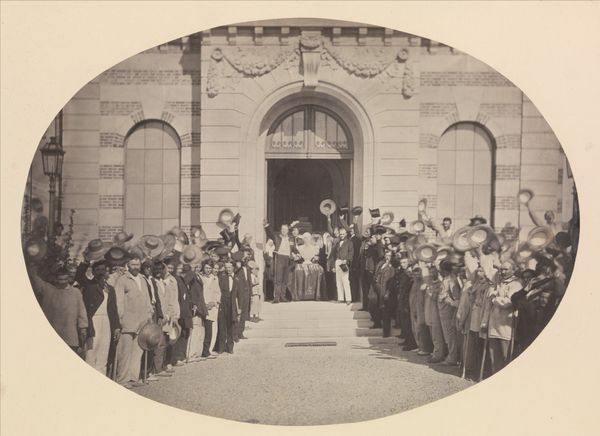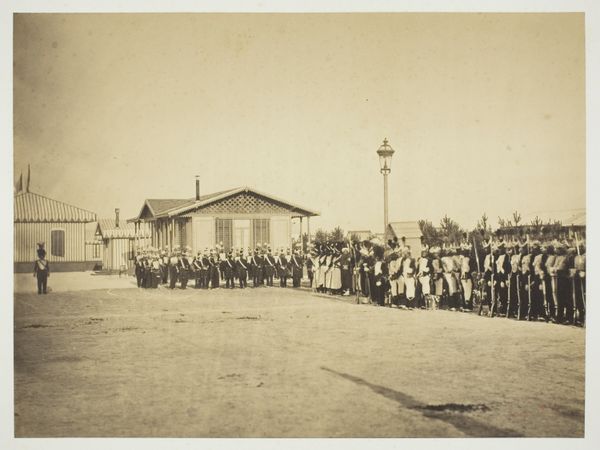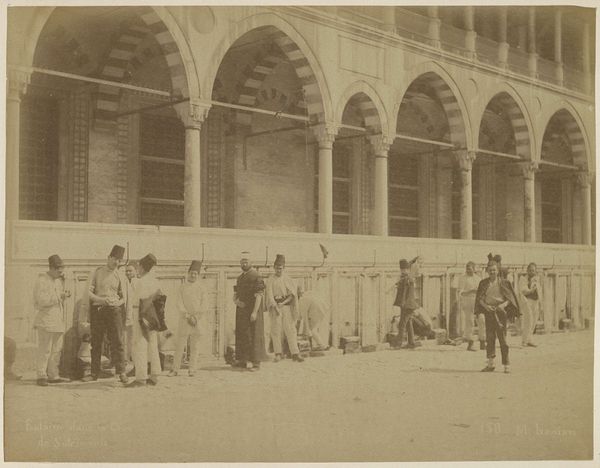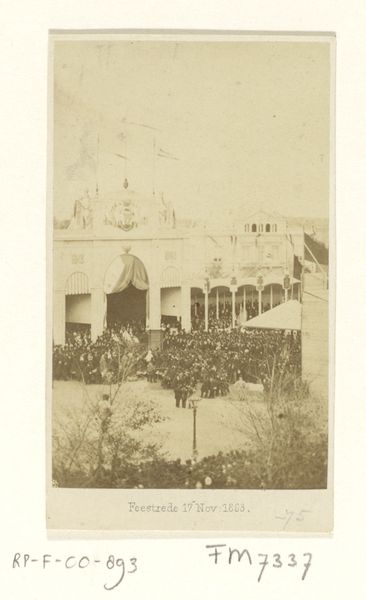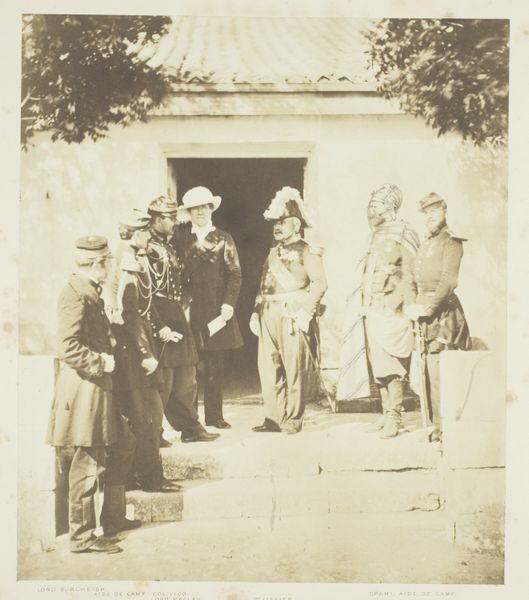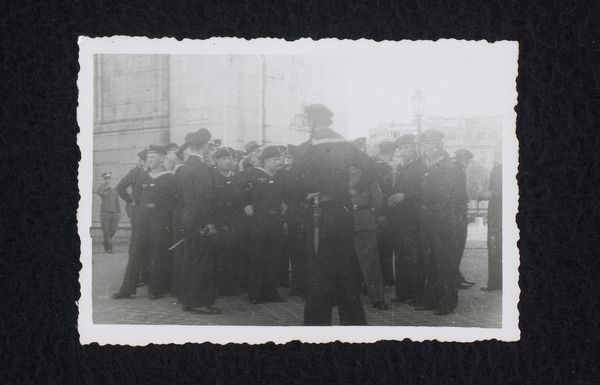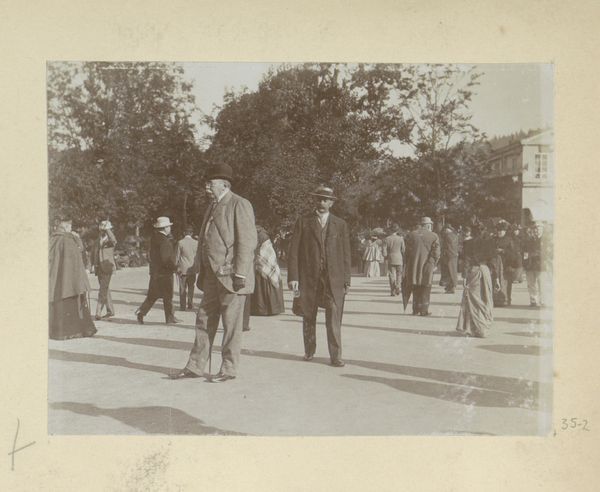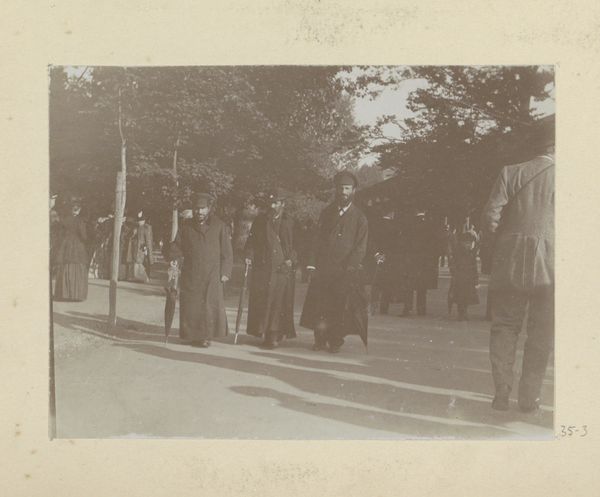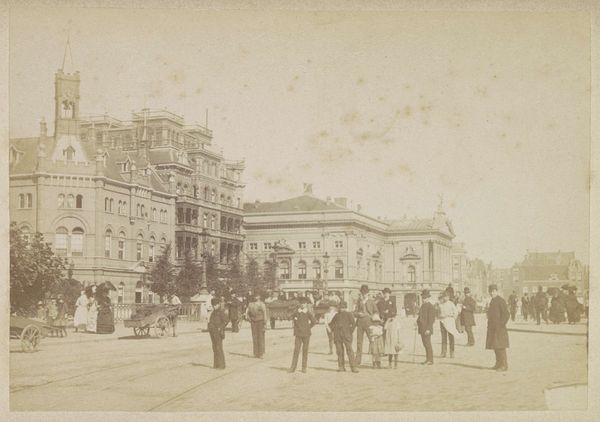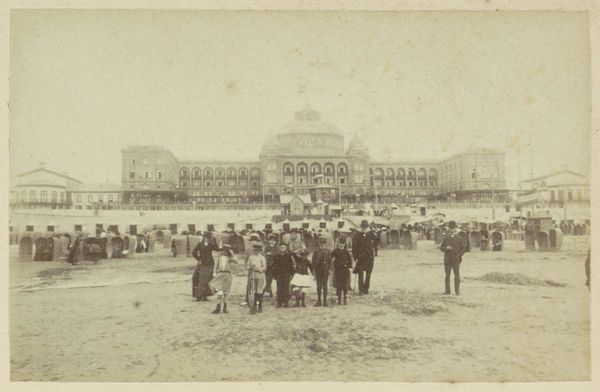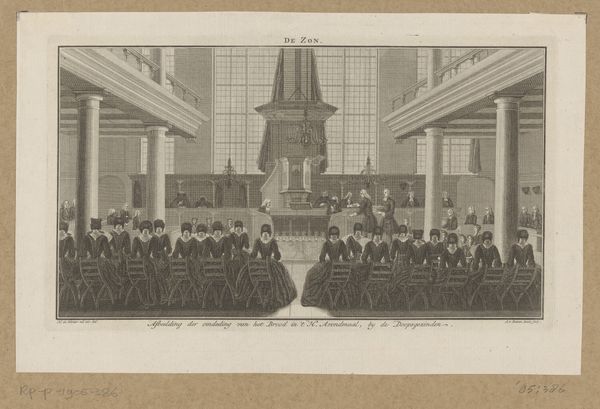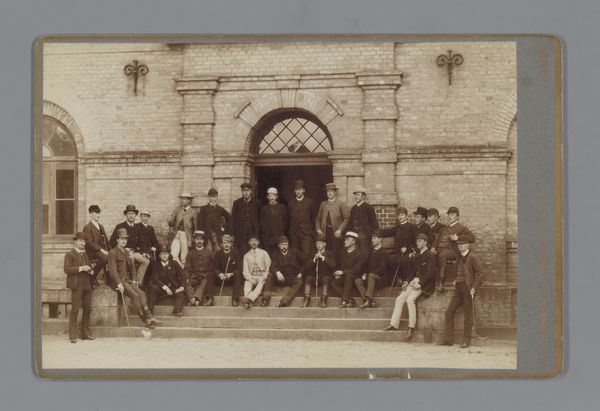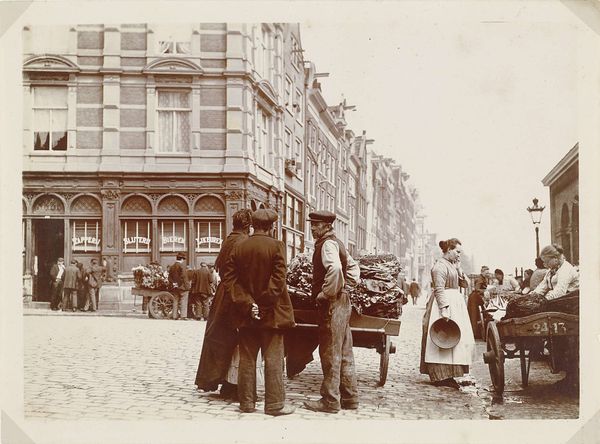
photography, gelatin-silver-print
#
portrait
#
16_19th-century
#
landscape
#
archive photography
#
street-photography
#
photography
#
historical photography
#
gelatin-silver-print
#
realism
Dimensions: height 108 mm, width 80 mm
Copyright: Rijks Museum: Open Domain
Curator: This photograph, entitled "Bankiers of handelaars voor de Beurs van Zocher," is attributed to Hendrik Herman van den Berg and thought to predate 1894. The work, a gelatin-silver print, presents a bustling scene outside what appears to be a stock exchange. Editor: It feels immediately formal and somehow gritty all at once. The grand architecture contrasts with the textured, almost harsh, surface of the cobbled street. You can practically feel it under your feet. Curator: Yes, the juxtaposition is quite striking. The tall columns suggest a neoclassical temple of commerce, while the crowd, mainly men in dark suits and hats, exudes a sense of ambition and perhaps anxiety associated with financial dealings. It's interesting how architecture and dress code both served to project institutional authority. Editor: Precisely. Look at how the cobblestones are worn and how that reflects labor. What stories do they tell of merchants and their commerce throughout the day? Gelatin-silver, though common at the time, helped fix that social moment and context in something reproducible. The print quality reinforces the raw, unvarnished reality. Curator: Indeed. The bowler hats and top hats on display function as powerful symbols of status and participation in the marketplace. One might analyze the individual figures and how their interactions or postures reveal underlying psychological currents, social strata within the exchange's ecosystem. Notice that they're milling out and there are steps, which may relate to classical depictions of gods leaving their temples. Editor: Good eye! It all boils down to power dynamics and how these were physically produced and codified through labor, clothing, material of streets and the print. It freezes a social and economic transaction in material form. That’s what stays behind. Curator: I hadn't considered the material as deeply. It certainly adds to my interpretation regarding how images carry meaning beyond their immediate representation. Editor: Exactly! Considering that makes all the difference.
Comments
No comments
Be the first to comment and join the conversation on the ultimate creative platform.
